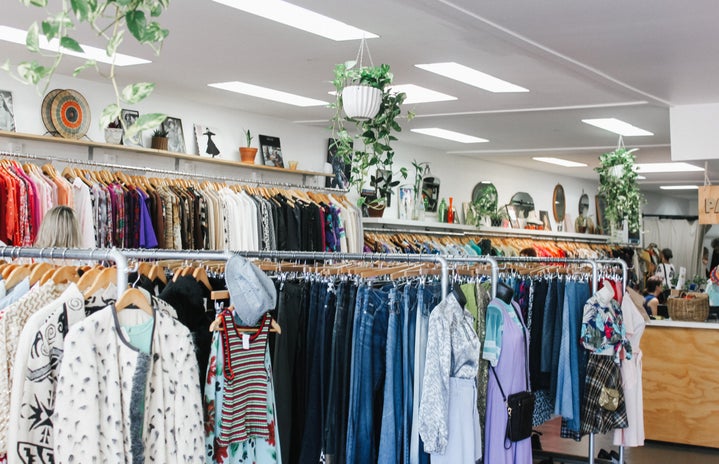Picture this: imaging doodling multicolored flowers on the legs of your jeans with just your finger. When it starts getting chilly, you tap the cuffs of your gloves so that they can warm you up as you hurry home. Just before you hop in the car for a weekend out, your jacket gives your wrist a light buzz, reminding you to get your phone from your bedroom before you step on the gas.
I know this sounds entirely too futuristic, but all of these tasks — and more — can be accomplished with a handy-dandy little thing called smart fabrics. These advanced materials aren’t even that far fetched at the moment, as there are currently labs and other facilities running research on developing new fabrics, and some are even on the market today. In this article, I’m going to go through a couple of examples of brands using smart fabrics, and how they’re good for the environment.
- Google & the Jacquard Jacket
-
A project that many techies might not be aware of is the Jacquard jacket, an initiative surrounding smart fabrics that’s being co-developed with Levi’s, the denim jeans brand we all know and love. These aren’t jeans though — this is a denim trucker jacket that, if you never even knew it had smart capabilities, looks like any other ordinary jean jacket. Using innovative Jacquard technology and yarn spun from conductive metal alloys as thin as a thread, Google and Levi’s aims to simplify your life by implementing features you’d usually do on your phone, directly from your cuffs. For example, let’s say that you want to pause your music, but your phone isn’t directly near you. Instead of running over to get it, you’d simply tap your cuff, and you’d be able to put a halt to your tunes until you want them to play again. To let you know that you left your phone behind, the jacket would lightly vibrate your cuff to get your attention once you get outside a certain distance from your phone.
- Sensoria & Smart Socks
-
Featured on Forbes, the LA Times, and the New York Times, Sensoria is an American maker of smart fitness training gear. Although they also sell smartwatches, sports bras, t-shirts, and more on their site, the product I want to focus on is their Sensoria Core Pair socks. At first glance, one might scoff at the price — $398 for a pair of socks? Before you roll your eyes, you should hear about what’s included in and with these socks. The socks are made of high-tech fabric with tiny sensors woven in. There’s a dock attached to each sock, where you could snap a Sensoria Core microelectronic in for additional functions. What could these microelectronics and sensors do for you? They could help you with tracking speed, calories, altitude, and other stats, and they can even let you know if you’re leaning towards a running style that could cause injuries down the line. The socks also come with a USB charger and a mobile app that serves as the sensors’ voice and gives you audio cues during your run.
- Sustainability?
-
With all of this, you may wonder how this ties into a more green fashion life. A lab in Beijing, China is working on weaving clothing threads with photovoltaic cells (the things solar panels are made of). One idea that American and Chinese labs are pursuing is the concept of fabrics that generate as little energy as possible to carry out their smart functions. Using the photovoltaic cells, the clothing would take in solar energy to power itself, instead of relying on a wired charger as we would use for our phones and laptops. Another concept proposed was to use the kinetic energy (the energy you produce when you’re running or moving around) the wearer would create and convert it into electricity.
Why is this greener than depending on another charger? Every plant, animal, person, and other living organism creates energy to be able to function and survive, but all this energy isn’t entirely used. When we do something that requires energy, part of the energy produced is lost to the environment. For example, when plants take in solar energy and change it into plant food, some of the solar energy is lost to the environment in the process. Then, a rabbit can come and eat the plant, and in the process of energy moving from the plant to the rabbit, some more energy is lost as heat to the environment. Then maybe a bear or a mountain lion can come to eat the rabbit, and while energy is being transferred from prey to predator, more energy is lost as heat. This goes on and on, and more energy is lost in the process. The more levels energy flows through, the more energy is lost in each turn. This is why having the fabric convert and use up energy by itself would be the most energy-efficient.
When you think of the future, you probably aren’t thinking of your outfit being able to answer phone calls or read out texts. You should definitely keep an eye out for smart fabrics though — and maybe even pick up something for you to wear now!



